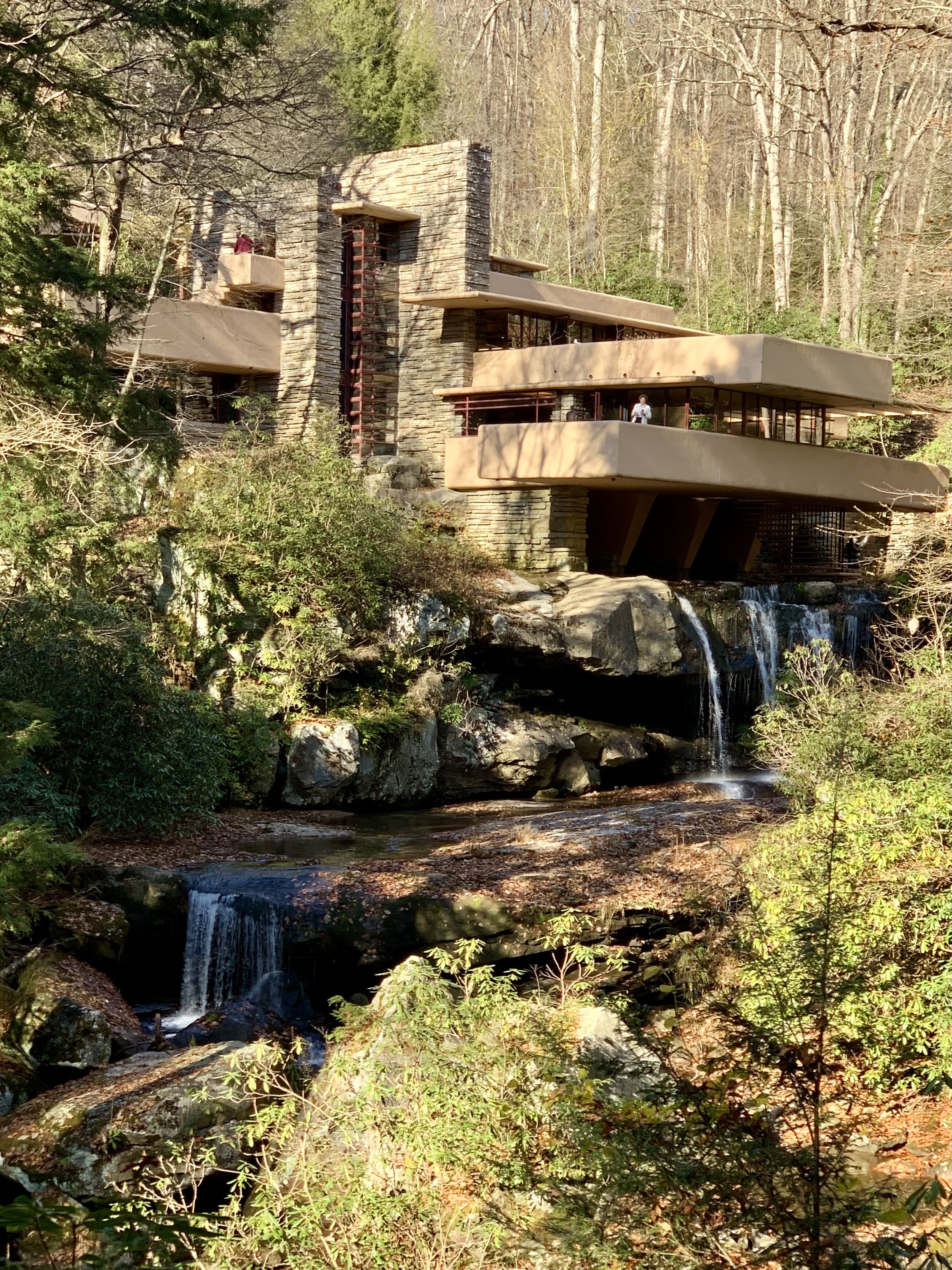Architect Corner - Frank Lloyd Wright, Fallingwater
Visiting Frank Lloyd Wright’s masterpiece Fallingwater was certainly the architecture highlight of our recent visit to Pittsburgh. Before our trip, I mentioned where I was headed to a fellow yogi, an interior designer, and she exclaimed that Fallingwater was on her bucket list of places to visit. I’m glad I was able to scratch off someone’s bucket list item!
The owners of Fallingwater were Edgar and Liliane Kaufman. Edgar was an American businessman and philanthropist who owned and directed Kaufmann's Department Store, in Pittsburgh. He is also known for commissioning two modern architectural masterpieces, Fallingwater, designed by Frank Lloyd Wright and the Kaufmann Desert House in Palm Springs, designed by Richard Neutra.
Below, a summary of Fallingwater condensed from the Frank Lloyd Wright Foundation website:
The Kaufmans met Wright in 1934, when their son, Edgar Jr. spent six months in the Taliesin Fellowship. Knowing that Wright shared their love of nature, they commissioned him to build a summer home for the family’s weekend retreat in Bear Run, PA.
In Fallingwater, Wright anchored a series of reinforced concrete “trays” to the natural rock. Cantilevered terraces of local sandstone blend harmoniously with the rock formations, appearing to float above the stream below. The first floor entry, living room and dining room merge to create one continuous space, while a hatch door in the living room opens to a suspended stairway that descends to the stream below. Glass walls further open the rooms to the surrounding landscape.
In 1938, Wright designed additional guest quarters set into the hillside directly above the main house and linked by a covered walkway. Fallingwater remained the family’s beloved weekend home for 26 years.
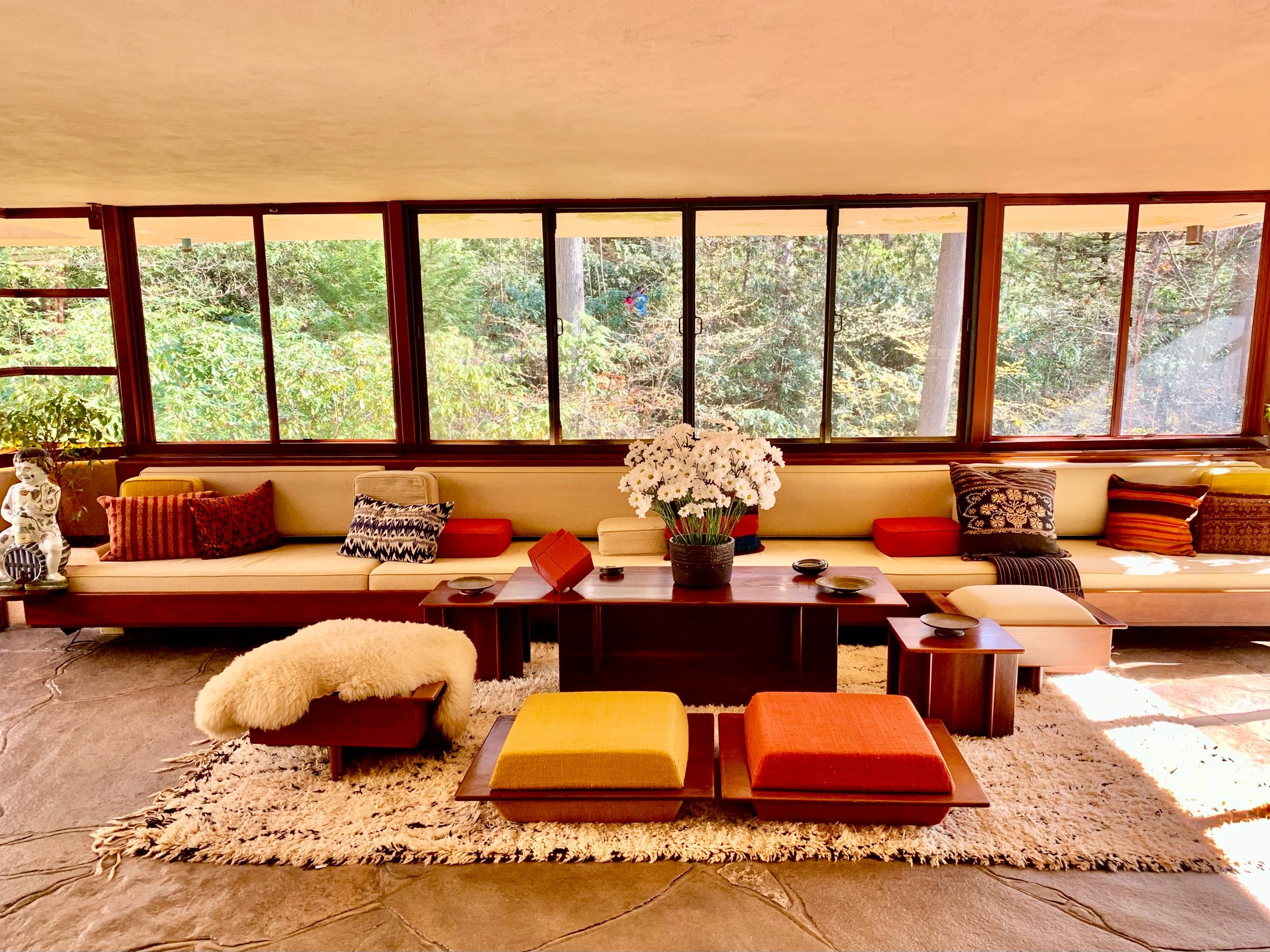
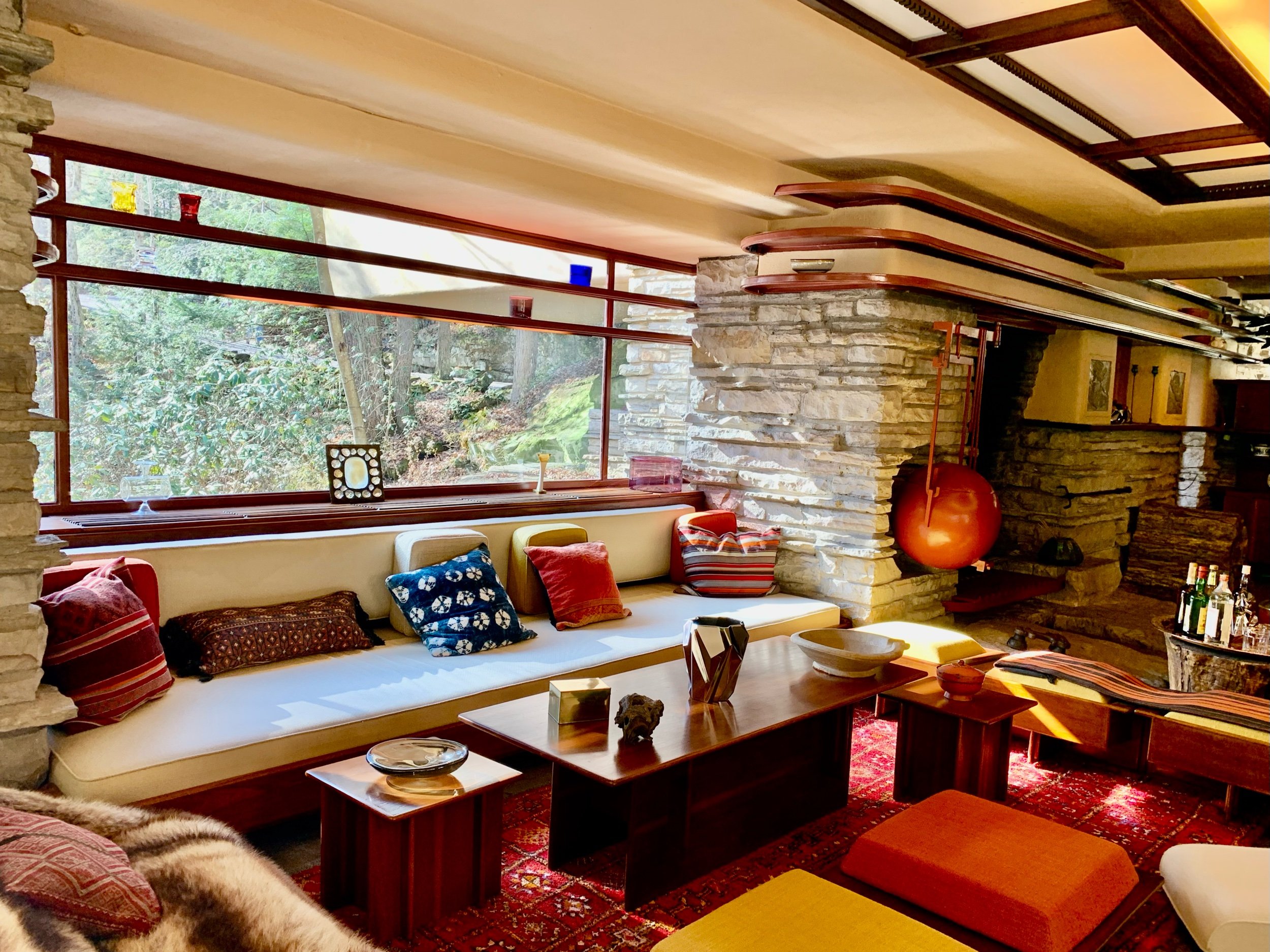
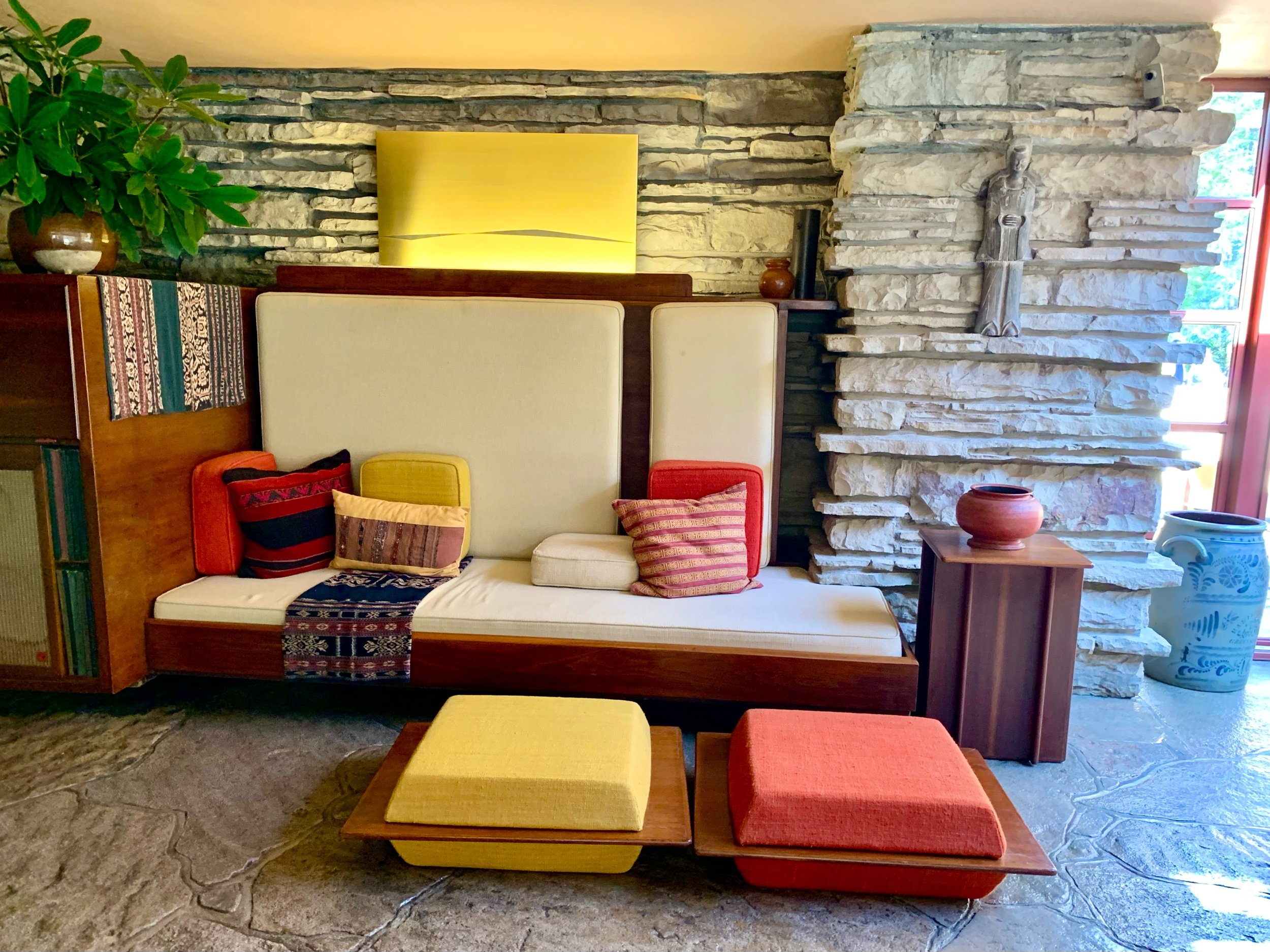

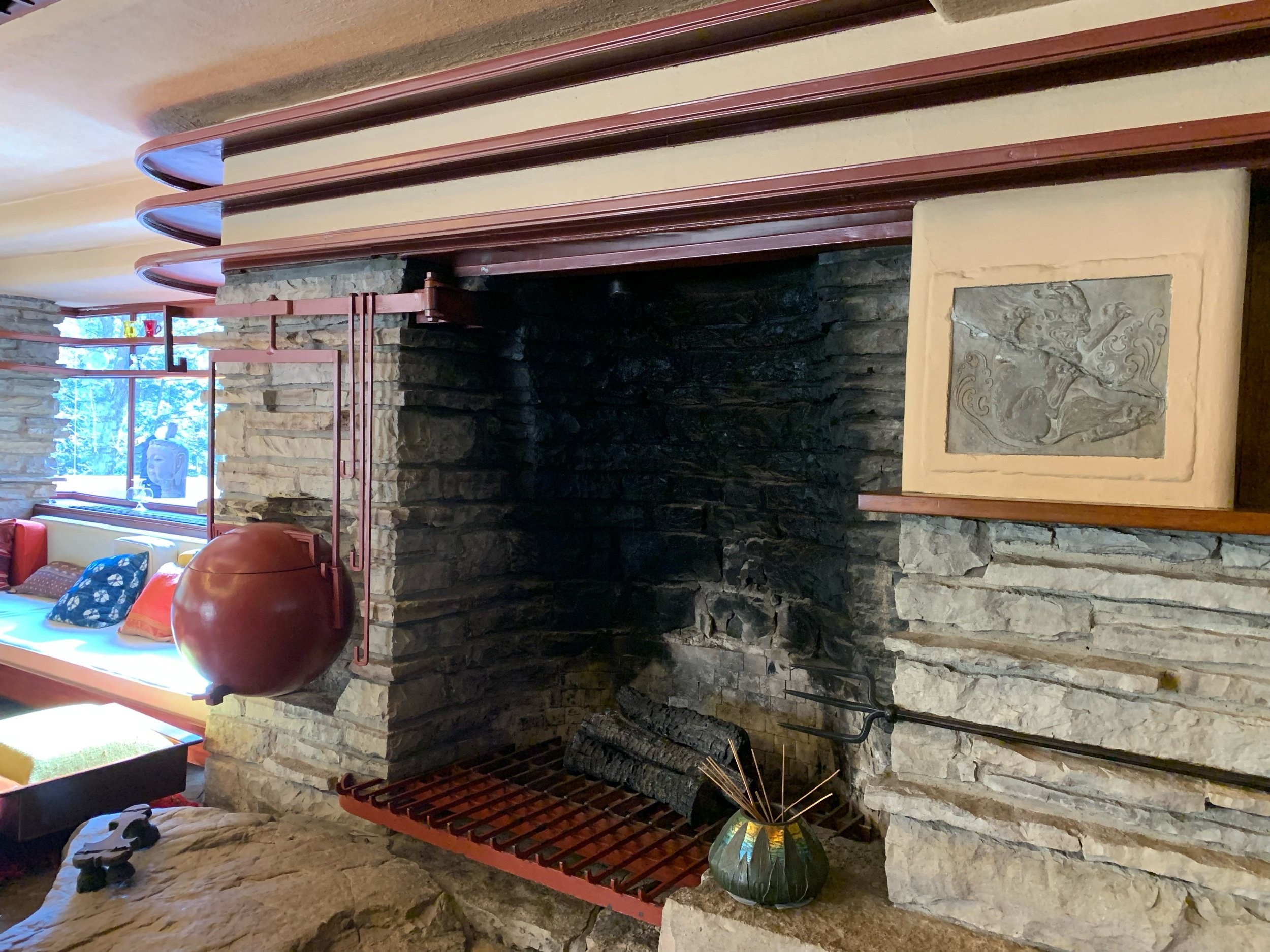
The tour we bought tickets for allowed us to take photos on the ground level, though I wish we could have taken photos on the upper levels as well. Alas, the tour which allowed more photo-taking was only offered early in the morning which didn’t fit our schedule.
I was delighted by the light in the interior space, the color, and all the built-in furniture. See photo gallery above.
My favorite room for the view and sounds of the waterfall was Edgar Kaufman’s bedroom on the second level. I bought a postcard with an image of that room.
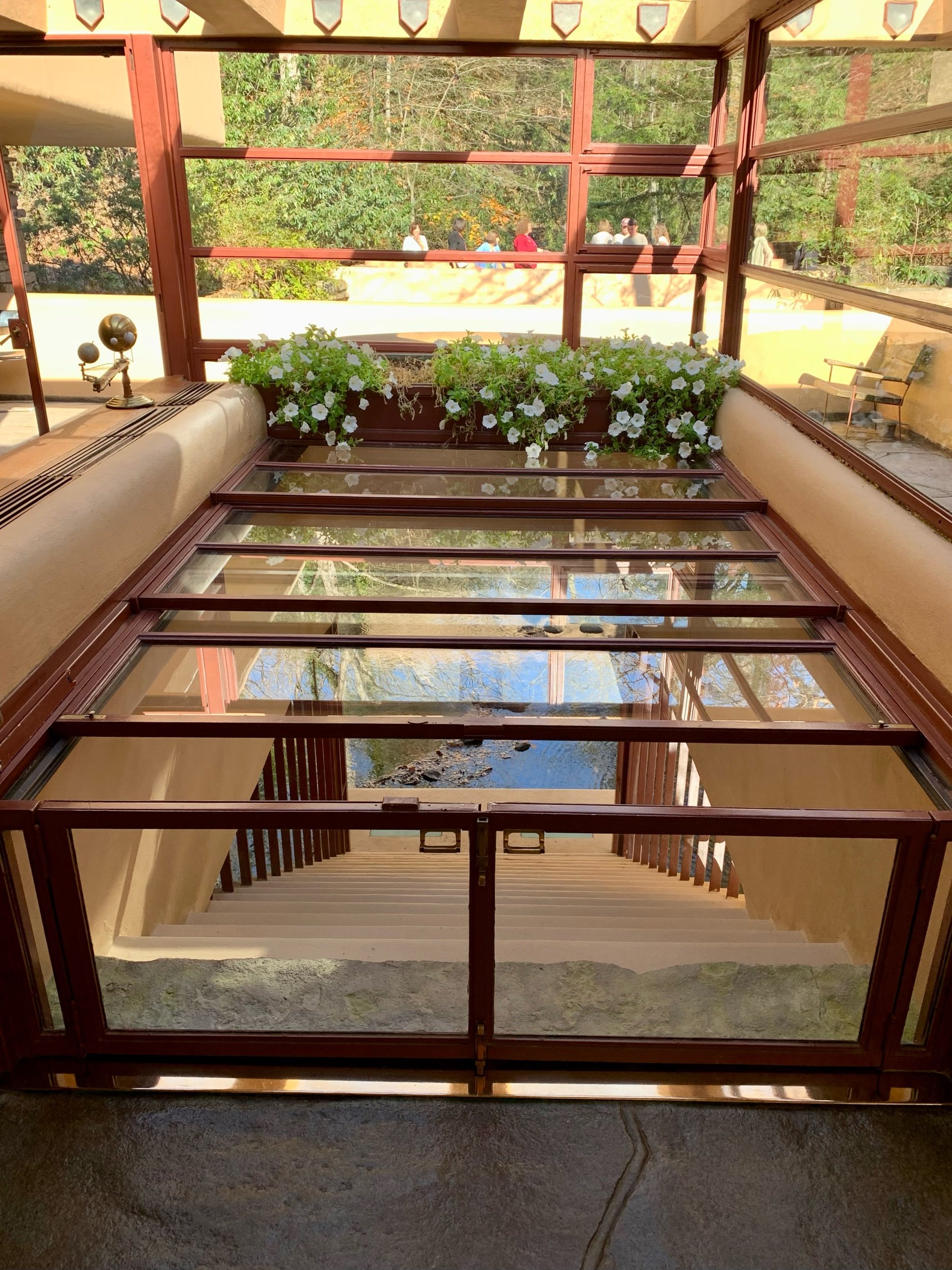
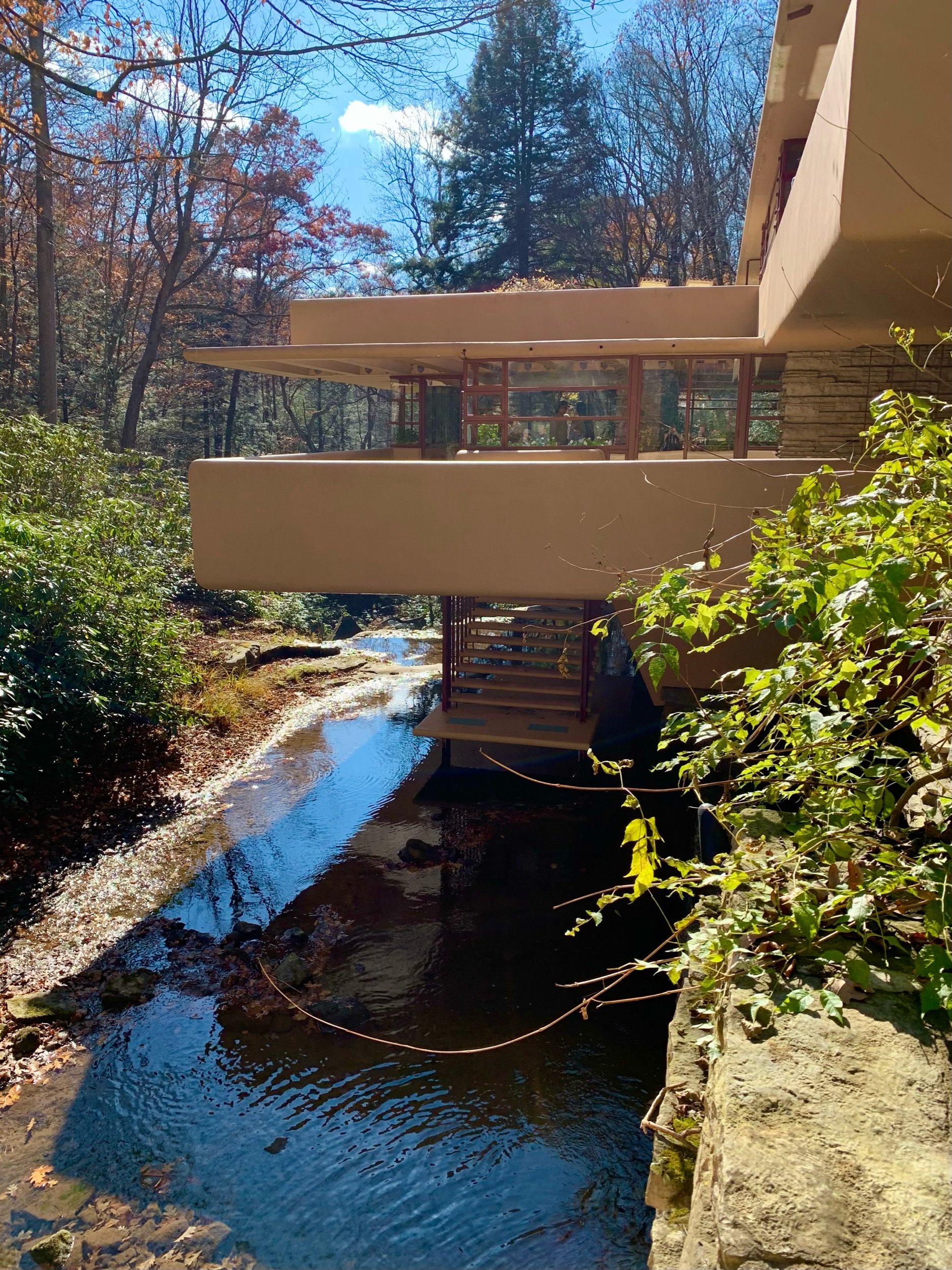

From the living room you can see the stairway access to the stream level (gallery above). Access down the stairway was off limits during the tour.
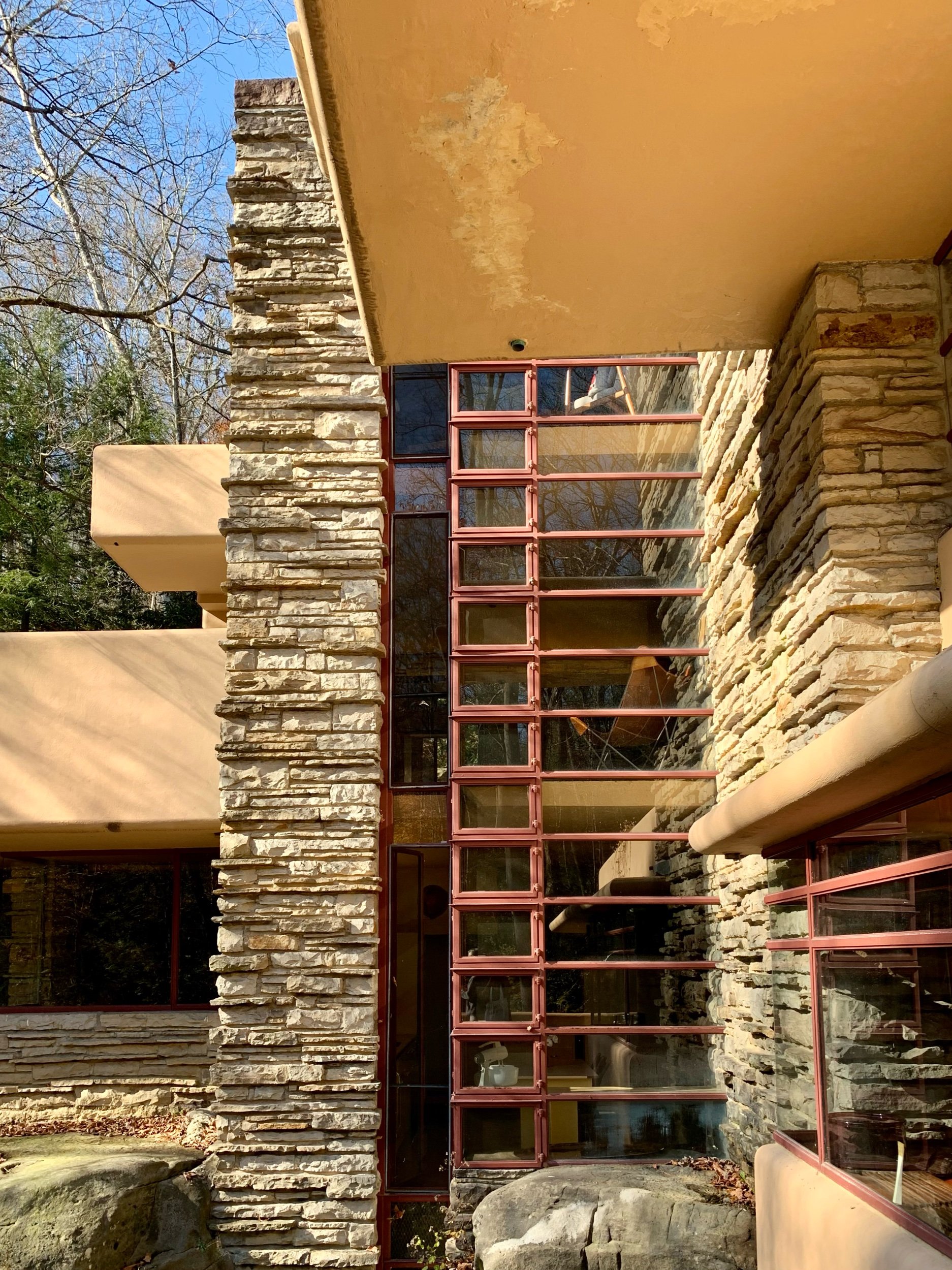

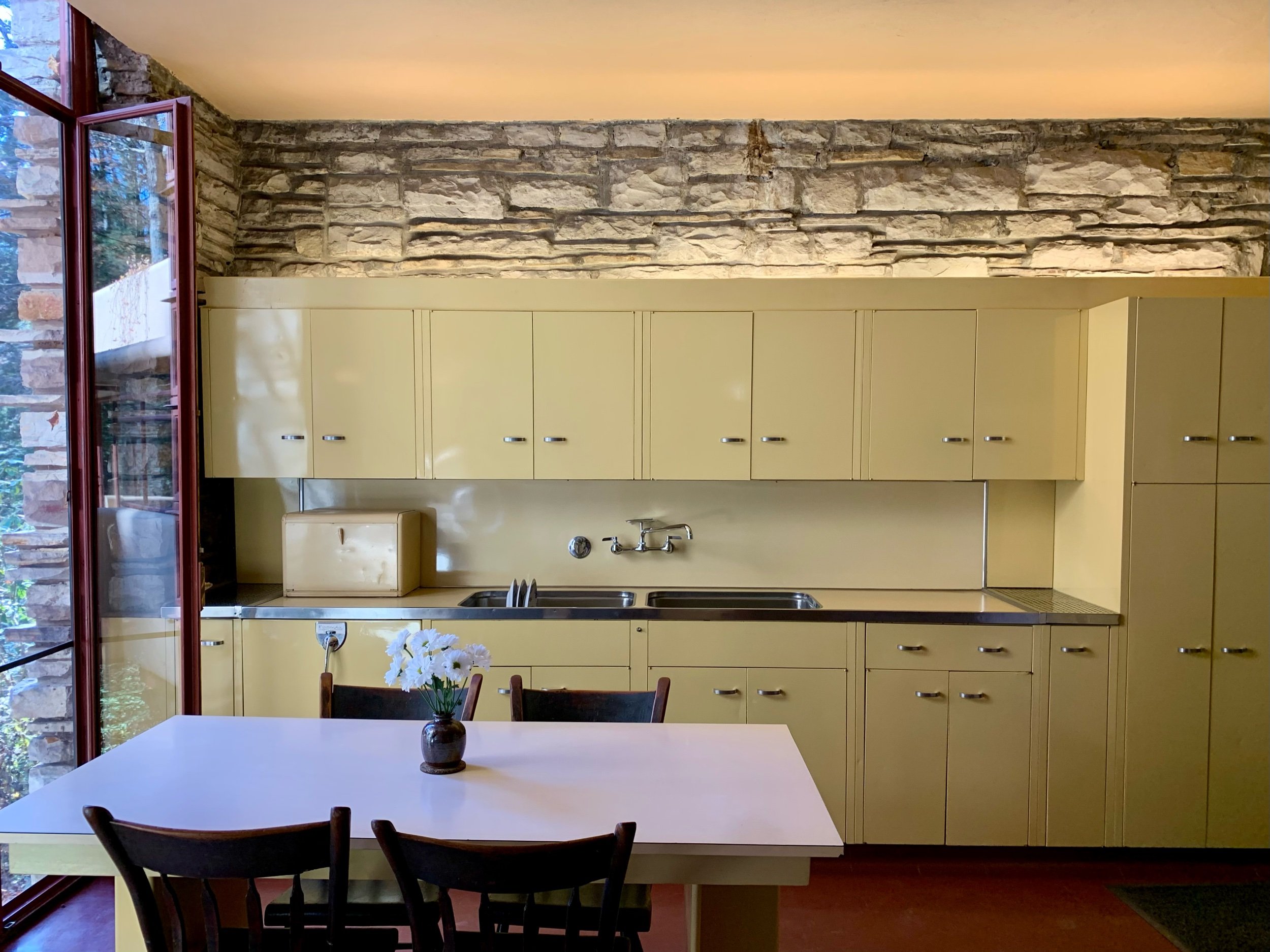
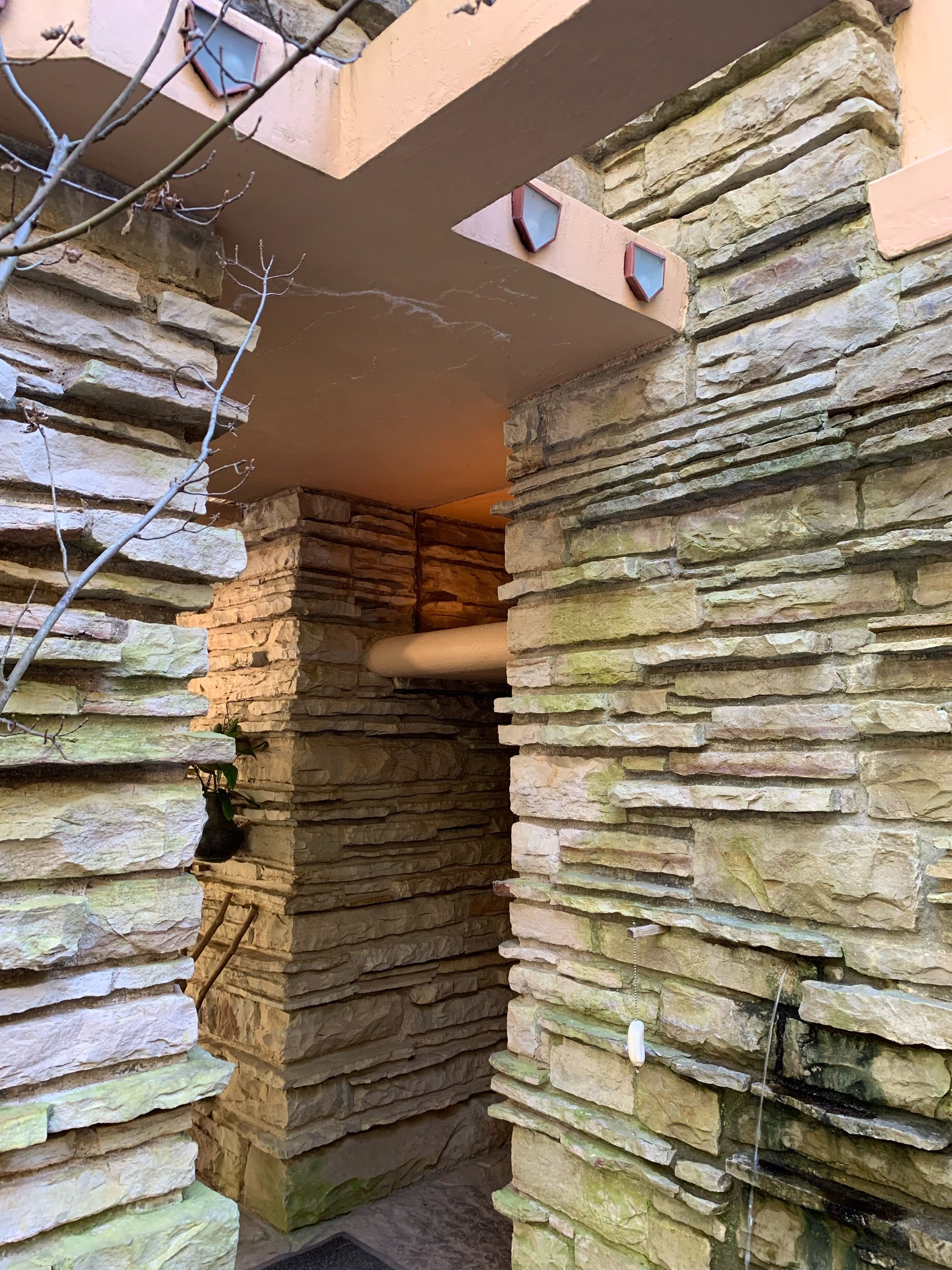
Abundant natural light streams into the kitchen as the window facing the stream juts out beyond the kitchen wall. Also shown is an image of the window wall from the exterior.
Fallingwater’s stone walls were constructed by hand using Pottsville sandstone quarried from the site and laid in irregular patterns to mimic the natural formations found in the landscape.
Above, postcard mementos from the gift shop of the view from the kitchen on level one and from Edgar Kaufman’s room on level two.
Notable dates:
Fallingwater opens for public tours In 1964.
Fallingwater is designated a National Historic Landmark by the United States Department of the Interior on May 11, 1976.
On July 10, 2019 the United Nations Educational, Scientific and Cultural Organization (UNESCO) World Heritage Committee inscribed Fallingwater and seven other Frank Lloyd Wright-designed sites to the UNESCO World Heritage List. The serial inscription, The 20th-Century Architecture of Frank Lloyd Wright, represents the first modern architecture designations in the US.


